Leica Summicron-M 28 mm f/2.0 Asph
3. Build quality
A good comparison of the tested lens’s dimensions can be seen in the photograph below where the Summicron 2/28 is positioned between its 35 mm brother and a Sigma 1.4/30. The Sigma is definitely bigger, especially much wider, than the two Leica lenses. On the one hand it is understandable as it is also by 1 EV faster; on the other hand, though, it is designed to work on small APS-C/DX sensors, not on full frame.
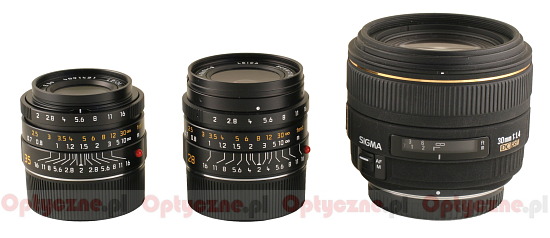 |
Please Support UsIf you enjoy our reviews and articles, and you want us to continue our work please, support our website by donating through PayPal. The funds are going to be used for paying our editorial team, renting servers, and equipping our testing studio; only that way we will be able to continue providing you interesting content for free. |
- - - - - - - - - - - - - - - - - - - - - - - - - - - - - - - - - - - - - - - - - - - - - - - -
The next chart shows a comparison between the Leica and its immediate rival so a Voigtländer Ultron 28 mm f/2.0 with a rangefinder, which is six times cheaper than the Leica. The tested lens is also smaller although heavier than its rival and the weight is not a result of more complex optics because actually it’s the Voigtländer which has more elements.
When you hold the Summicron in your hand it is difficult not to have the impression that you deal with an optical and mechanical masterpiece. You see that glass and metal, being of the highest quality, fit perfectly well and are processed in an excellent way.
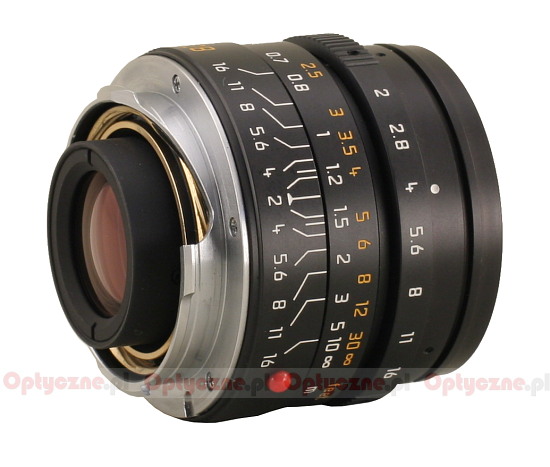 |
The lens starts with a characteristic M bayonet mount after which we see a dark, metal housing. On the housing there is a very wide depth of field scale with markings for all the apertures offered by the lens so ranging from f/16-f/2. Then you find a manual focus ring on which there is a distance scale in both feet and meters. The ring is not ribbed as it is usual for other lenses or a Summicron 2/50 but has a special projection, fitting our thumb perfectly – the projection allows to turn the ring freely, comfortably and precisely. If you haven’t had the opportunity to use such a mechanism before it might seem strange at the beginning but soon enough you get used to it and even start to miss it when dealing with other lenses.
Even higher we see an aperture ring which moves every 0.5 EV stop. Its work is flawless, exactly like in the case of the manual focus ring.
At the very end of the lens we find a very flat, taking into account the angle of view, front element which is surrounded by a non-rotating E46 filter thread.
When it comes to the inner construction we deal here with 9 optical elements in 6 groups. The element situated the closest to the detector is aspherical. Inside there is also an aperture with eight diaphragm blades.
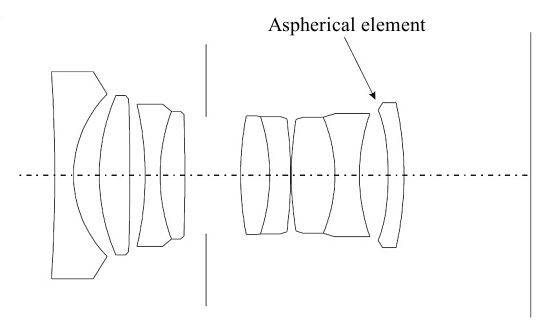 |
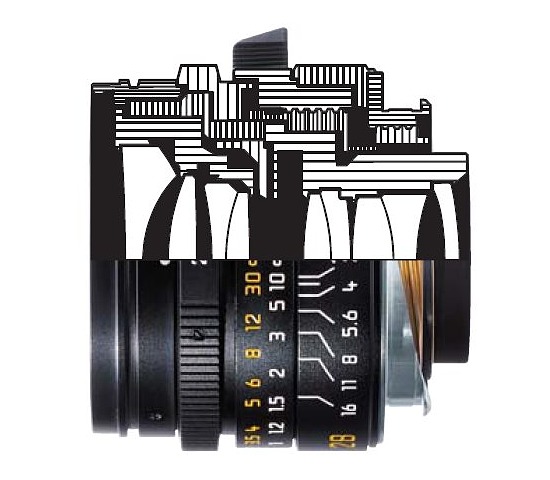 |
The buyer gets both caps, a snap-on plastic hood with a fitting cap and a leather case included in box.
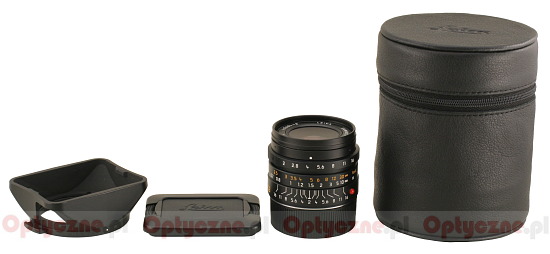 |






